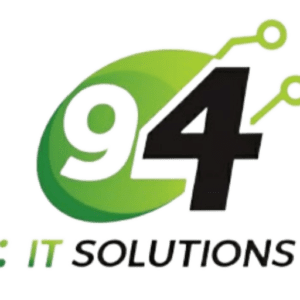
software development for startups is the backbone of turning innovative ideas into reality while ensuring scalability and sustainability for future growth.
What is Software Development?
At its core, software development refers to the process of designing, building, and maintaining applications or systems. This involves everything from coding to testing, debugging, and ongoing maintenance.
Why Startups Need Software Development
Startups are unique in their requirements, especially when it comes to growth potential and scalability. Software is crucial for automating processes, delivering services, and providing customer value. It also plays a critical role in differentiating your startup from competitors.
The Importance of Custom Solutions
Startups often need software tailored to their specific needs. Off-the-shelf solutions might be quick and affordable, but they can lack the flexibility and scalability that startups require as they grow. Custom software, on the other hand, is built to meet the exact needs of your business and can evolve over time.
Off-the-Shelf vs. Custom Software
While off-the-shelf software can get you started quickly, custom software offers long-term benefits by allowing more control, flexibility, and scalability. However, custom solutions can be more expensive and time-consuming upfront.
Planning Your Startup’s Software Development
The key to successful software development for startups is planning. Skipping this stage often leads to costly mistakes later on.
Defining Your Startup’s Goals and Needs
Before jumping into development, you need to be clear about what your startup aims to achieve with the software. Are you looking to solve a particular problem for your customers? Define your objectives early on to guide the development process.
Identifying Target Users and Their Problems
Understanding who your users are and what challenges they face helps in designing software that actually solves problems. This research phase is critical in ensuring the success of your product.
Prioritizing Features for a Minimum Viable Product (MVP)
An MVP is a simplified version of your product that includes only the core features. This allows you to test your idea with real users while keeping development costs low. Start with the essentials and scale up as you receive feedback.
The Software Development Life Cycle (SDLC)
Software development doesn’t happen overnight. It’s a multi-step process, known as the Software Development Life Cycle (SDLC), that ensures each phase of the project is well-managed.
Phases of SDLC
- Planning and Requirements Analysis
This stage involves gathering all the necessary requirements for your software, ensuring that the project aligns with your startup’s goals. - Design and Architecture
Based on the requirements, the design phase outlines how the software will function and look. - Development and Implementation
This is where coding begins, turning the design into a working product. - Testing and Quality Assurance
Testing ensures that the software is free of bugs and performs as expected. - Deployment and Maintenance
Once the software is live, ongoing updates and maintenance are crucial for performance and security.
Choosing the Right Tech Stack
Your tech stack consists of the technologies you’ll use to build your software. Choosing the right tools can significantly affect the performance, scalability, and cost of your project.
Frontend vs. Backend Development
Frontend development handles everything users interact with directly, like buttons and forms, while backend development focuses on servers, databases, and application logic.
Programming Languages and Frameworks
Popular technologies for startups include:
- Backend: Node.js, Ruby on Rails, Django
- Frontend: React, Angular, Vue.js
Working with a Development Team
Whether to hire an in-house team or outsource your development is a big decision for startups.
In-House vs. Outsourced Development Teams
Both options have pros and cons. In-house teams offer better control and faster communication, while outsourcing can save costs and provide access to specialized expertise.
Agile Methodology for Startup Software Development
The Agile methodology focuses on delivering small, incremental updates rather than one big launch. This approach is perfect for startups as it allows for flexibility and faster time-to-market.
Budgeting for Software Development
Understanding software development costs is vital for startups. Expenses include development, testing, and post-launch maintenance.
Cost-Saving Strategies
Utilizing open-source tools and considering offshore developers are effective ways to cut costs without sacrificing quality.
Common Challenges in Startup Software Development
Startups often face issues such as technical debt, scalability challenges, and development timeline mismanagement. Anticipating these challenges helps mitigate their impact.
Post-Development: Scaling Your Software
After your initial launch, scaling your software is essential to meet growing demand. This includes optimizing performance, integrating user feedback, and continually updating features.
Security in Startup Software Development
Cybersecurity should never be an afterthought. Implementing best practices early on can save you from major problems down the line.
Conclusion
Software development is an ongoing process that requires careful planning, execution, and maintenance. By understanding the steps involved and the challenges you might face, your startup can develop software that supports growth and success.
FAQs
What is the typical cost of developing software for a startup?
Costs can range from $10,000 to over $100,000 depending on complexity and team size.
How long does it take to develop software for a startup?
Development can take anywhere from 3 months to a year, depending on the project scope.
Should I choose an in-house or outsourced development team?
It depends on your budget and project needs. In-house offers control, while outsourcing can reduce costs.
What is MVP in software development?
MVP stands for Minimum Viable Product, which includes only the core features to test your idea.
How do I ensure my startup’s software is secure?
Implement strong security measures like encryption, regular updates, and secure coding practices.
